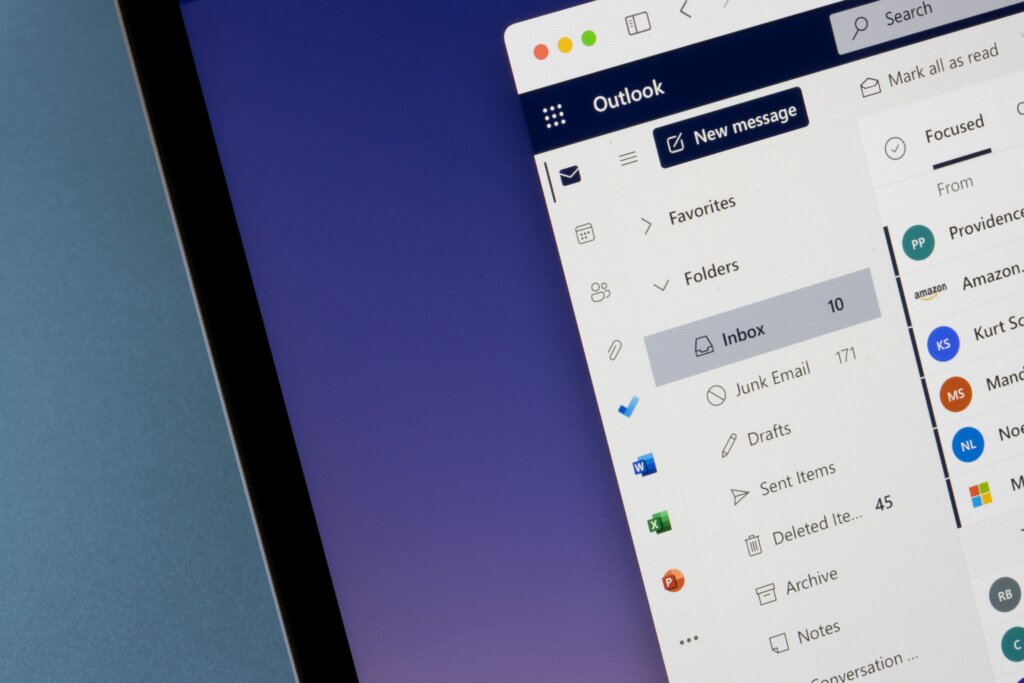
Google plans to delete accounts with no activity within 2 years. (Source – Shutterstock)
A clear message from Google: Stay active or we’ll delete
- Google to delete accounts inactive for two years from December 1, with select exemptions.
- Google targets two-year dormant accounts; YouTube creators and Google Play developers exempted.
Google is progressing with its plan to delete accounts without 2 years of activity and this has raised a lot of questions among Google users.
Accounts will be retained until December 1. However, Google will begin sending alerts to affected users even earlier. If provided, multiple notifications, including backup emails, will be dispatched with an eight-month grace period before deletion.
Why Google cares, the activity criteria before they delete
Introduced in May, this policy targets potential security vulnerabilities. Data shows that older accounts often recycle passwords and lack updated security features, like two-step verification, making them particularly vulnerable to threats such as phishing and hacking.
As Google mentioned in May, accounts that were created and never accessed again are prioritized for removal.
Security breaches in the digital age have exposed many reused passwords. An outdated Google account bearing such a password is like a dormant volcano: unpredictable and potentially devastating. Furthermore, many of these accounts lack the latest security features, increasing their breach susceptibility.
Yet, the threat is not limited to weak passwords. Inactive accounts are prime phishing targets. Cybercriminals use account deletion threats to deceive users into revealing their credentials. Older accounts without the latest security features become easy targets for hackers, making them potential spam distribution points and jeopardizing Google’s reputation.
Broadly speaking, individual accounts can provide entryways to larger systems, especially if interconnected with various digital services. In safeguarding outdated accounts, Google is defending individuals and its vast digital infrastructure.
Fundamentally, Google’s evolving policies underscore its dedication to cybersecurity. Moving from mere content removal to full account deletion may seem drastic, but it’s a proactive stance against risks in dormant accounts. This initiative could serve as a model for platforms that blend user convenience, efficient data management, and stringent cybersecurity.

Twitter user tweeted on how Google plans to delete accounts without 2 years of activity. (Source – Twitter)
As Google emphasized in its latest policy update, “We aim to guard your private information and thwart unauthorized access, even if you discontinue our services.”
Stay active with Google, how inactivity triggers account deletion
Recognizing its services’ multifaceted nature and the various implications of account deletions, Google has delineated some policy exemptions:
- YouTube channels: Due to potential financial ramifications for creators, YouTube channels will be untouched. The possible loss of ad revenue and subscriber connections is paramount. Moreover, certain channels serve as vital archives, immortalizing historical events.
- Gift card balances: Accounts with leftover gift card balances are cautiously managed to avert financial and legal complications.
- Digital purchases: Accounts of users who have bought digital products, such as books or films, are excluded, ensuring continuous access.
- Google Play developers: This exemption accentuates Google’s bond with its developer community. Accounts linked to active apps on platforms like Google Play will remain to avoid disruptions.
Google’s commitment to preserving personal details aligns with the tech realm’s heightened emphasis on user privacy. Melding privacy and security is intricate. Eradicating inactive accounts enhances both objectives. Google’s transparency, manifested through ample warning periods, ensures users have mastery over their digital trajectory.
Google’s nuanced policies walk the tightrope between user engagement and trust. This fresh policy builds on the 2020 directive, which solely wiped out content from unused services, sparing the accounts.
To ensure account retention, interact with any Google service biennially. This can range from reading an email to initiating a search.
What this policy change means for the average Google user
For the average Google user, the company’s policy change has broader implications that extend beyond the technical realm and delve into our digital lives’ behavioral and sociological aspects.
Firstly, from a data consciousness standpoint, the policy serves as a wake-up call, highlighting the significance of one’s digital footprint. As users become more mindful of the lifespan of their online data, they might feel prompted to revisit their accounts and sift through their stored information periodically. This newfound awareness could lead to a proactive approach where users regularly delete outdated data or backup essential information.
Regarding digital maintenance, the policy accentuates the parallels between our online and offline lives. Just as one might routinely clean their home or sort out their physical mailbox, the digital realm demands similar upkeep. This could manifest in more frequent password updates, security checks, and perhaps even a surge in interest for digital hygiene resources, such as webinars, courses, or specialized software.
Trust in tech giants like Google, is always a concern. But Google might bolster its trustworthiness among users by ensuring clear communication and providing ample warning about such policy shifts. This transparent approach sets a precedent, potentially raising expectations for how other tech companies should communicate their changes.
Moreover, this policy nuances our understanding of digital permanence. The age-old belief that “everything online lasts forever” now faces scrutiny. Recognizing the transient nature of unattended digital data, users may re-evaluate their preferences, possibly leaning towards personal storage over cloud-based solutions.
But what does this mean in terms of affected accounts? The number of untouched accounts could be monumental, given Google’s status as a tech behemoth with services spanning Gmail, Google Drive, Google Photos, and YouTube. Over the years, users often create ‘experimental’ accounts for niche uses or temporary projects. Combined with accounts from older demographics less attuned to the digital age’s rapid evolutions, these could constitute a vast portion of inactive profiles.
Without access to Google’s internal metics, exact figures are elusive but one could speculate that tens of millions of accounts, if not more, have been dormant for over two years, especially considering Google’s global presence and long-standing operation.
Google’s warning signal: Lack of activity now comes with a delete button
In their quest for impeccable services, tech titans shoulder a mandate beyond mere functionality. They’re stewards of colossal user data volumes, warranting vigilant protection.
- Protecting users and infrastructure: Tech firms’ primary duty is platform security. Outdated accounts devoid of modern security can fall prey to threats. Thus, deleting or updating these accounts secures individual users and the broader digital realm. Google’s decision to erase inactive accounts is forward-thinking.
- Balancing data retention with server efficiency: Managing vast user data requires significant server resources. Tech companies must balance retaining user data and ensuring optimal server performance. Deleting inactive accounts can help companies maintain a streamlined database, leading to more efficient services for active users.
- Ensuring privacy and user trust: Companies like Google have a duty to protect users’ private information, even if they’ve stopped using their services. By being transparent about their data management policies, these companies can cultivate trust among users. Google’s detailed exemptions outline showcases their attempt to prioritize users’ varied needs.
- Empowering users: In the ever-evolving digital landscape, empowering users to control their data is vital. Companies can emphasize the importance of personal data management by notifying users well in advance and giving them options (like backing up their data). Such policies can educate users about their digital footprint and the significance of periodic account maintenance.
- Setting industry standards: Big tech companies, like Google, often set the tone for the industry. Their policies can serve as benchmarks or guidelines for other platforms. By taking a proactive approach to data management and security, Google establishes a precedent others might follow.
- Adapting to the digital landscape: The digital age is characterized by rapid changes. Tech companies must adapt their policies to reflect current realities to stay relevant and efficient. For instance, as cybersecurity threats evolve, so should the measures to combat them. The shift from merely deleting content from unused services to removing entire accounts is an example of such adaptation.
- Recognizing digital permanence and transience: As the article rightly points out, there’s a myth that “everything online lasts forever.” Tech companies play a role in debunking this notion by introducing policies that highlight the transient nature of unattended digital data. Such steps encourage users to re-evaluate their perceptions of digital permanence and adjust their behavior accordingly.
Comparison with other tech giants
Yahoo Mail’s historical inactivity policy dictated that accounts untouched for 12 months were considered abandoned, leading to the deletion of all associated data. This stands in contrast to Google’s more lenient two-year policy.
For Yahoo users, this meant a mandatory annual sign-in to retain their account and data, proving particularly relevant for those who viewed their Yahoo emails as archival or backups.
On the other hand, Google offers a more extended period before considering deletion, though both companies aim to enhance server efficiency and tackle security threats from inactive accounts.
Similarly, Microsoft’s email accounts inactivity rules for Outlook and Hotmail were stringent. Accounts not accessed within a year were marked as inactive. The ramifications included releasing the email address for potential reuse and deleting all emails and contacts. Like Yahoo’s policy, Microsoft’s approach required users to maintain regular activity, especially if their accounts served backup or secondary purposes.

Microsoft stance when it comes deleting accounts due to no activity comparing to Google. (Source – Shutterstock)
While Google’s two-year rule seems more user-friendly at face value, Microsoft’s tighter timeframe was primarily to reutilize old email addresses and optimize server storage. Yet, it’s evident that Google’s recent policy adjustment leans more towards addressing security issues.
Account retention policies across tech giants, while variable in their specifics, have shared goals: manage server resources efficiently, ensure that the user database is up-to-date, and minimize security risks associated with long-inactive accounts.
From a user’s perspective, while Google’s two-year inactivity policy might seem more user-friendly than the one-year policies of Yahoo and Microsoft, it underscores the importance of periodically checking in on all online accounts, irrespective of the platform.
These policies also emphasize the transient nature of digital data. Just because something is stored online doesn’t mean it will be there indefinitely. Regular maintenance and backups are crucial for ensuring that vital information is not lost.
READ MORE
- Businesses optimistic on generative AI, but face a reality gap in deployment: Study
- Data Strategies That Dictate Legacy Overhaul Methods for Established Banks
- Securing Data: A Guide to Navigating Australian Privacy Regulations
- Ethical Threads: Transforming Fashion with Trust and Transparency
- Top 5 Drivers Shaping IT Budgets This Financial Year


